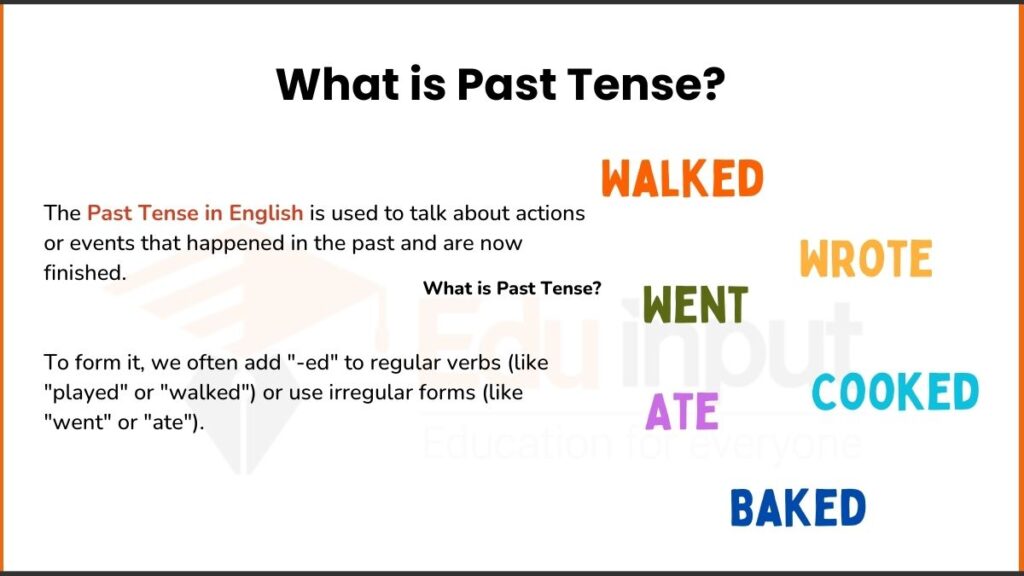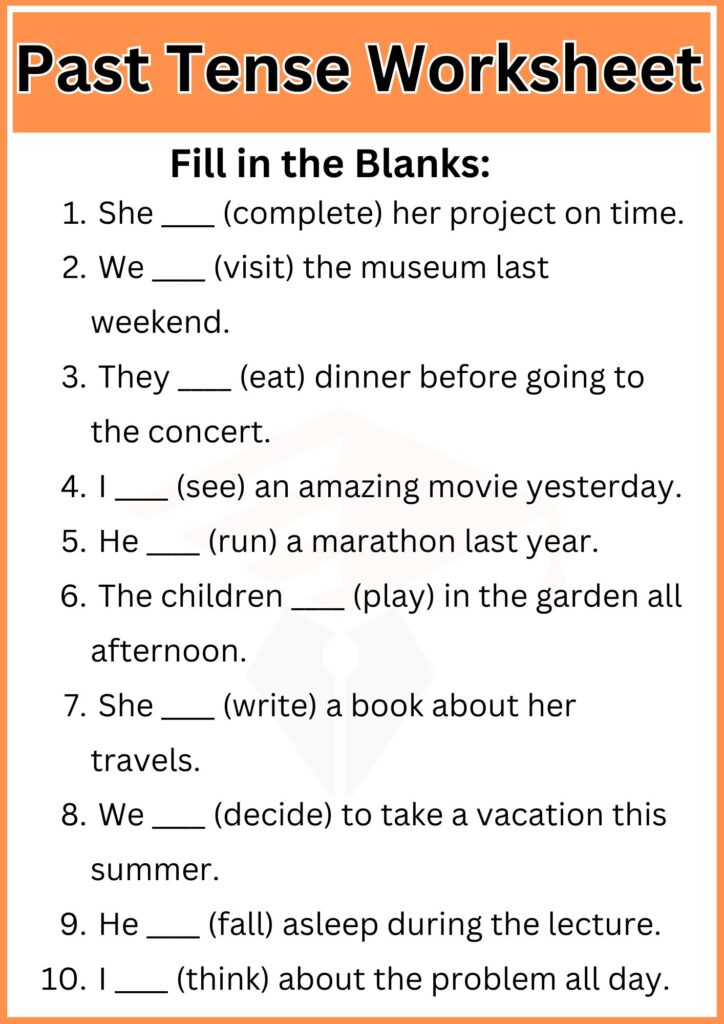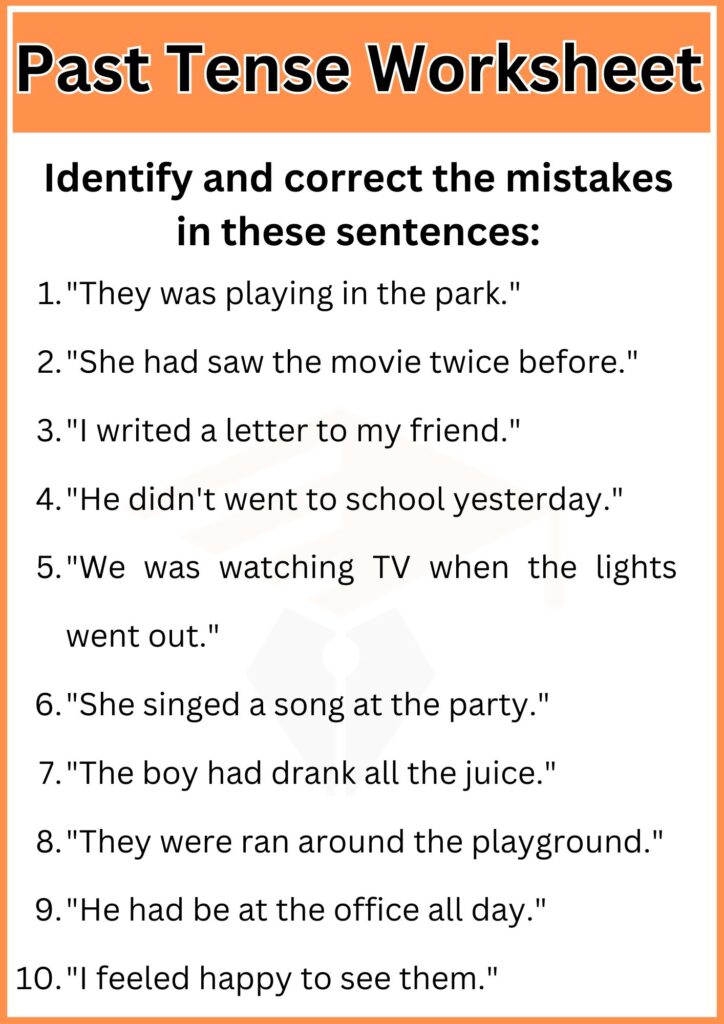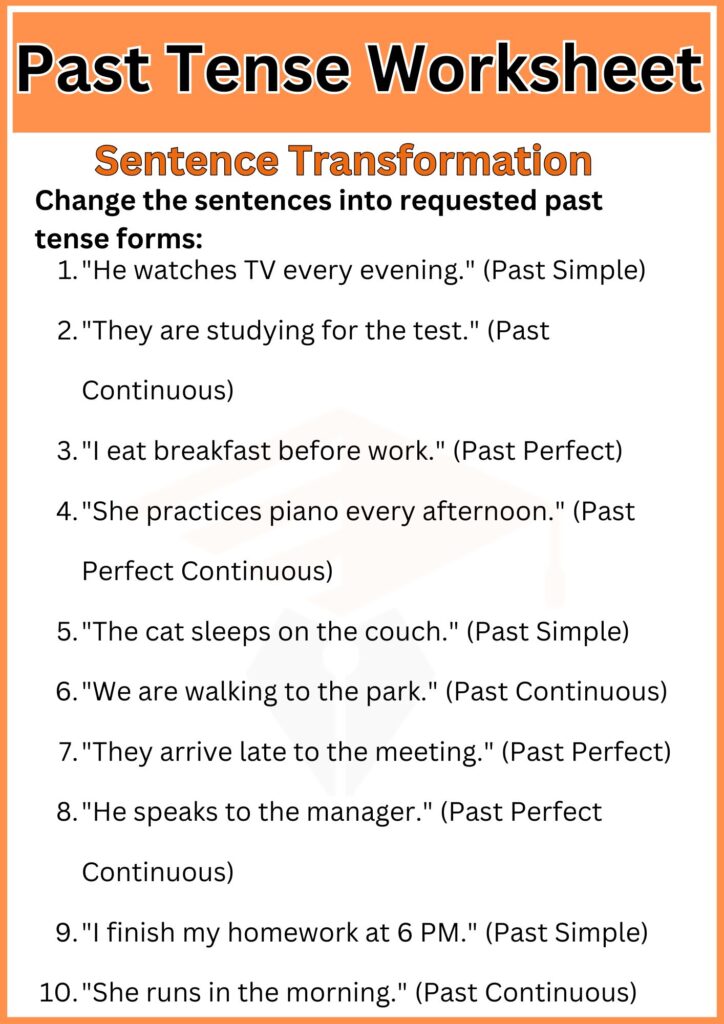Past Tense-Types, Struture, Examples, and Worksheets
What Is Past Tense?
Past tense is used to describe actions, events, or states that have already occurred.
The past tense is essential for storytelling, narrating events, and providing context about prior actions. It helps us understand sequences of events and differentiate between present and past activities.
Put is a common verb in English that uses the same letters in the present and past tense. And eat is a common verb in English that becomes its own past tense, “ate,” by rearranging its letters.

Quick Examples
- “She visited the museum.”
- “They were studying for the test.”
- “We had completed the project before the deadline.”
Types of Past Tense
The past tense is divided into four main types. Each type serves a specific purpose in describing past actions.
| Type | Description | Example |
| Past Simple | Describes actions completed in the past. | “I worked yesterday.” |
| Past Continuous | Describes ongoing actions in the past. | “I was working.” |
| Past Perfect | Describes actions completed before another past action. | “I had worked.” |
| Past Perfect Continuous | Describes ongoing actions completed before another past action. | “I had been working.” |
Structure of Past Tense Sentences
Each type of past tense follows a specific structure.
| Type | Structure | Example |
| Past Simple | Subject + Past Verb | “She danced beautifully.” |
| Past Continuous | Subject + was/were + Present Participle | “They were playing soccer.” |
| Past Perfect | Subject + had + Past Participle | “We had finished our homework.” |
| Past Perfect Continuous | Subject + had been + Present Participle | “He had been running for hours.” |
Examples of Past Tense Sentences
Here are some examples of past tense usage in sentences:
- “She walked to school.” (Past Simple)
- “They were playing in the park.” (Past Continuous)
- “I had finished the report before the meeting.” (Past Perfect)
- “He had been studying for hours.” (Past Perfect Continuous)
- “We watched a movie last night.” (Past Simple)
- “She was reading a novel.” (Past Continuous)
- “They had left before we arrived.” (Past Perfect)
- “I had been working on the project all day.” (Past Perfect Continuous)
- “He cleaned the room.” (Past Simple)
- “They were having dinner.” (Past Continuous)
List of Past Tense Verbs
Past tense verbs are classified as regular or irregular. Familiarity with these verbs helps in accurate communication.
Common Regular Verbs
- Walk → Walked
- Talk → Talked
- Play → Played
- Laugh → Laughed
- Work → Worked
Common Irregular Verbs
- Go → Went
- Eat → Ate
- Write → Wrote
- See → Saw
- Take → Took
- Run → Ran
- Begin → Began
- Come → Came
- Drink → Drank
- Know → Knew
Examples
- Regular: “She walked to school.”
- Irregular: “He went to the park.”
Check our detailed article on Most common Past Tense Verbs in English
Past Tense Excercise
- She ____ (arrive) at the station on time.
- We ____ (enjoy) the concert yesterday.
- He ____ (read) an interesting article last night.
- They ____ (forget) to bring their tickets.
- I ____ (hear) a strange noise coming from the attic.
- The kids ____ (build) a sandcastle at the beach.
- She ____ (write) a beautiful poem for the contest.
- We ____ (decide) to stay at home due to the rain.
- He ____ (drink) a whole bottle of water after the run.
- I ____ (lose) my keys while shopping.
Past Tense Error Correction Activity
Identify and correct the mistakes in these sentences:
- She had saw the rainbow.
- They was playing video games all day.
- I runned to catch the bus.
- We didn’t went to the party.
- He had forget his wallet at home.
- She singed beautifully at the concert.
- The children was making noise in the room.
- I feeled tired after the workout.
- They were ate before the meeting started.
- He had drank all the coffee by himself.
Past Tense Worksheets



Read Related Articles



Leave a Reply